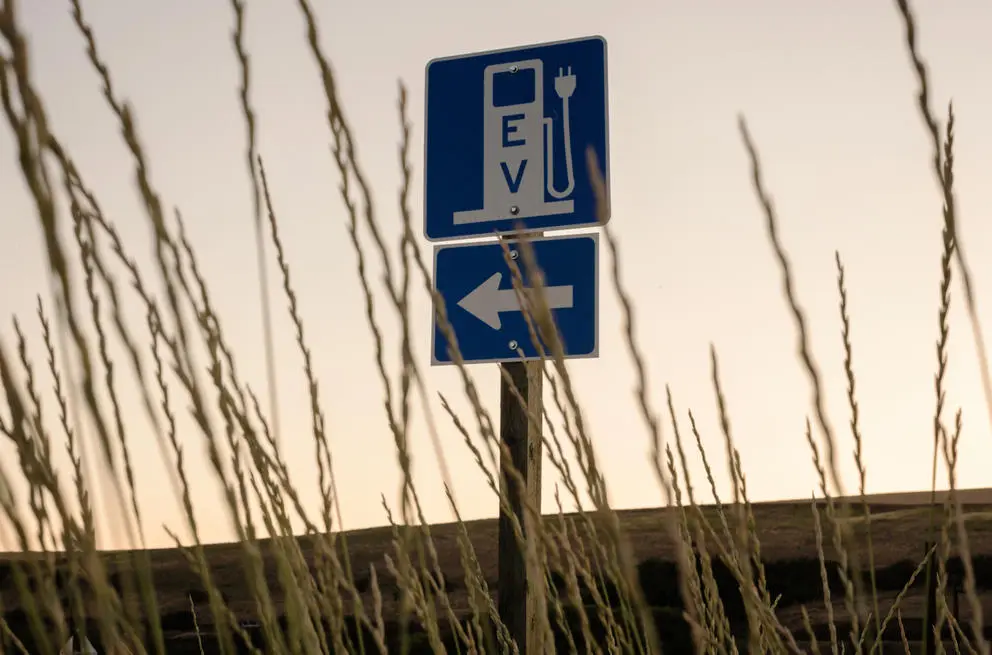
- Details
- By Darren Thompson
Two Midwest tribes are getting a $6.5 million boost from the U.S. Department of Energy to launch electric vehicle (EV) infrastructure on their tribal lands.
The Red Lake Band of Chippewa and the Standing Rock Sioux Tribe will get an equal share of the grant funding secured by Native Sun Power Development. Each community will acquire six EVs, six fast-charging stations, 16 level-2 charging stations and a budget to create workforce-training programs related to EVs and green energy at the tribal college level and community education programs.
Bob Blake, a member of the Red Lake Band of Chippewa Indians and CEO of Native Sun Community Power Development, said the electric vehicle project allows tribes to have a say in their future in the face of climate change.
“We’re trying to combat the use of fossil fuels and trying to give people a choice,” Blake told Native News Online. “If we get this technology in the hands of Native people, we could be leaders in this industry.”
As well, Blake said the presence of EV charging stations on the Red Lake Reservation in northern Minnesota could be a draw for consumers who already have EVs.
“I think as we create more alternative fuel economy corridors, it’s going to open up a new world for EVs consumers who want to go somewhere,” Blake said. “With an EV charging network leading directly through our communities, it could create a new wave of tourism where consumers are spending money in Tribal communities.”
Native Sun Community Power Development, Minnesota Pollution Control Agency, Minnesota Power, Otter Tail Power Company and Xcel Energy are working together to provide EV infrastructure serving local Tribal communities, as well as add EV chargers to the Native American National and State Scenic Byway and other routes that are heavily traveled by Native communities.
At Standing Rock, both of its casinos — Prairie Knights Casino and the Grand River Casino — the tribal administration, Sitting Bull College and its transit operations will acquire EVs, according to the head of the tribe’s public power authority.
“As the availability increases, so will our ability to go distances with an EV,” SAGE Development Authority General Manager Joseph McNeil told Native News Online. “The whole problem with EVs is having charging stations within 100 miles of each other.”
SAGE is a federally chartered Section 17 Corporation created by the Standing Rock Sioux Tribe as a public power authority. It oversees all energy production assets within the Standing Rock Indian Reservation. In addition to overseeing the EV project, it is developing a 235MW wind farm on the reservation and has raised more than $430,000.
Implementing charging stations will likely take place in the summer, said McNeil.
“Once those chargers are in the ground, then it’s something to really celebrate,” he said. “We’ll have something physically tangible that people with EVs can stop through Standing Rock to visit.”
Last November, during the Tribal Nations Summit, the Biden Administration announced a National Electric Vehicle Initiative for Tribal Nations, which is said to ensure that Tribes and Native communities are included in the EV future.
“Until today, there has not yet been a clear, specific, national plan for deployment of EV infrastructure to Indian country and Alaska Native communities,” the White House Council on Native American Affairs (WHCNAA) wrote in a summary last November. “The goals of this EV initiative are to ensure that: Tribal Nations are part of the EV future of the country; federal resources for EV development are equitably shared and supportive of Tribal economies; and the physical buildout of a national EV network includes Tribal lands and Native communities.
“As EVs begin to shape the future of transportation, energy, and economic opportunity in communities, we must work with Tribal leaders and Tribal citizens to include Tribes within a national network of EV infrastructure.”
More Stories Like This
Klamath Indigenous Land Trust Purchases 10,000 Acres as Salmon ReturnTrump signs law that revokes some limits on drilling in Alaska’s National Petroleum Reserve
Southern Sierra Miwuk Nation Gets 900-Acres ofLand Back
Chilkat Indian Village Tells New Palmer Mine Owners They Are “Not Welcome” in Chilkat Valley
Tribes, Coastal Group Ask Army Corps to Revoke Permit for Texas Export Terminal
Help us defend tribal sovereignty.
At Native News Online, our mission is rooted in telling the stories that strengthen sovereignty and uplift Indigenous voices — not just at year’s end, but every single day.
Because of your generosity last year, we were able to keep our reporters on the ground in tribal communities, at national gatherings and in the halls of Congress — covering the issues that matter most to Indian Country: sovereignty, culture, education, health and economic opportunity.
That support sustained us through a tough year in 2025. Now, as we look to the year ahead, we need your help right now to ensure warrior journalism remains strong — reporting that defends tribal sovereignty, amplifies Native truth, and holds power accountable.
 The stakes couldn't be higher. Your support keeps Native voices heard, Native stories told and Native sovereignty defended.
The stakes couldn't be higher. Your support keeps Native voices heard, Native stories told and Native sovereignty defended.
Stand with Warrior Journalism today.
Levi Rickert (Potawatomi), Editor & Publisher

